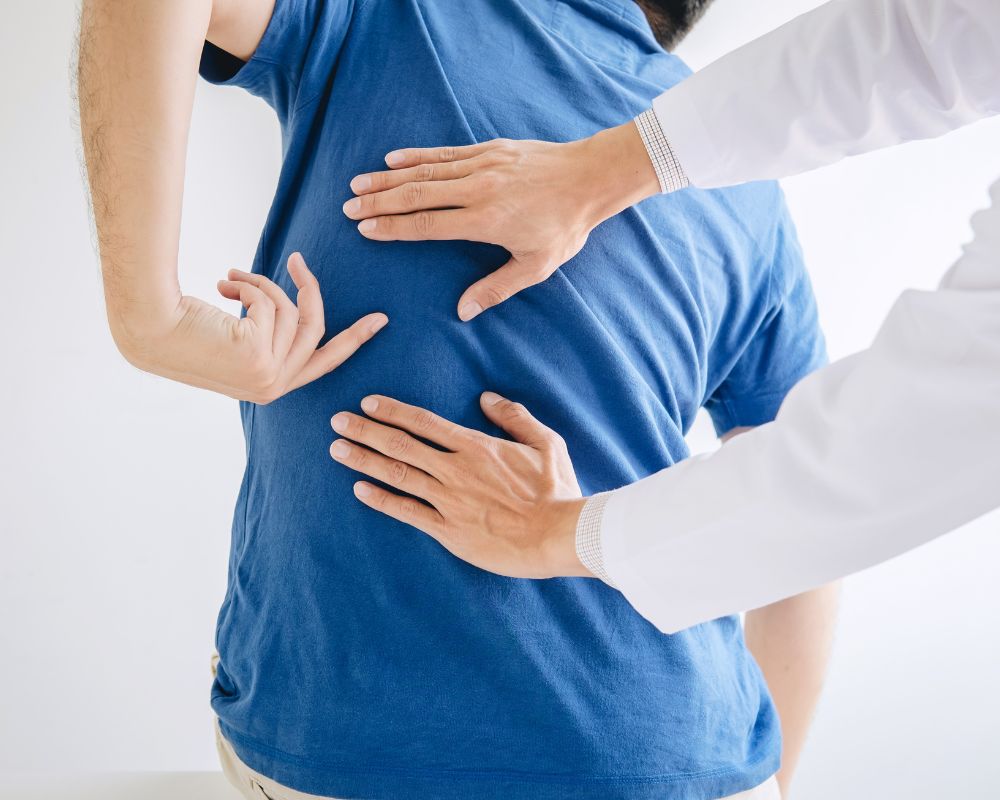
24 Jan Degenerative Disc Disease: What Is It and How Is It Treated?
Back pain is one of the most common conditions we treat here in our Texas pain management clinic. Likewise, degenerative disc disease is a pretty routine cause of back pain. Yet despite its ominous sounding name, degenerative disc disease isn’t actually a disease at all. It is a specific kind of condition that is very treatable.
Most cases of degenerative disc disease are related to age. Fortunately, very few cases are fully debilitating. With the right treatment and some lifestyle changes, most patients can continue living full and normal lives. But the key is proper treatment.
An Explanation of the Condition
The human spine consists of a series of bones and joints designed to be sturdy but flexible. Between each of the bones is a disc. The disc provides cushioning between the bones and allows the spine to move. If the spine were one solid piece, like a metal rod for example, we wouldn’t be able to move and twist as we do.
In a degenerative disc scenario, some of the discs have begun to deteriorate. This ultimately leads to less cushioning. It can also lead to inflammation, muscle tension, tenderness, and lack of spinal stability. All of this can lead to pain.
As far as the degenerative nature of the condition, it is so described because the affected discs can continue to deteriorate over time. The good news is that pain doesn’t tend to increase as a result. It is important to note that many degenerative disc disease patients actually experience less pain over the long term. This is believed to be the result of what medical science refers to as the degenerative cascade effect.
The Symptoms of Degenerative Disc Disease
So how do we know that a patient suffers from this particular condition as opposed to something else? We closely examine the patient’s symptoms. The most common among those symptoms is a consistent low-grade pain felt in the general area of the affected disk.
Many patients also experience:
- more pain when lifting, twisting, or bending
- a sensation that the back or neck is ‘giving out’
- radiating pains described as burning, sharp, or stabbing
- muscle tension and sometimes severe muscle spasms
- differing levels of pain based on position and activity.
Note that degenerative disc disease can affect any part of the spine, from the neck all the way down to the hips. Fortunately, few patients experience the condition along the entire length of the spine. Usually it’s just one or two joints.
How the Condition Is Treated
Many doctors choose to treat degenerative disc disease with over-the-counter pain medications. Prescription painkillers may be offered when pain is especially severe. Doctors also tend to recommend heat or cold therapy, steroid injections, and manual manipulation.
Here at Lone Star Pain Medicine, we offer a variety of effective treatments. Below is a short list of some of the more common treatments we recommend for this particular condition:
- Discography
- Lumbar sympathetic block
- Medial branch block
- Radiofrequency neurotomy
- Discoscopic discectomy
- Laser discoplasty
- Spinal cord stimulation.
Whether or not any of these treatments would be right for you would depend heavily on your current health and the progression of your condition. Before we can recommend any particular treatment, we would need to do a full evaluation.
Degenerative disc disease is a fairly common condition. If you think your back pain might be related to it, we invite you to make an appointment to visit our clinic. Our doctors are experts in pain management. They can help you figure out what’s going on and offer the best treatment options.


No Comments